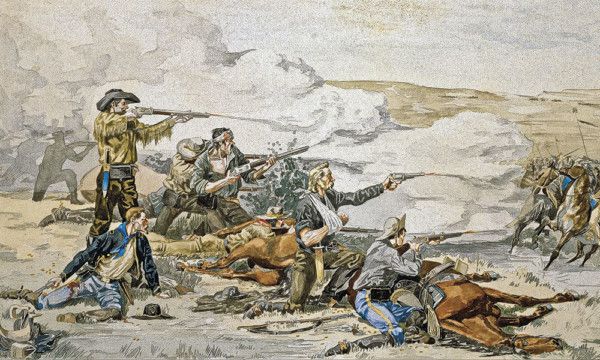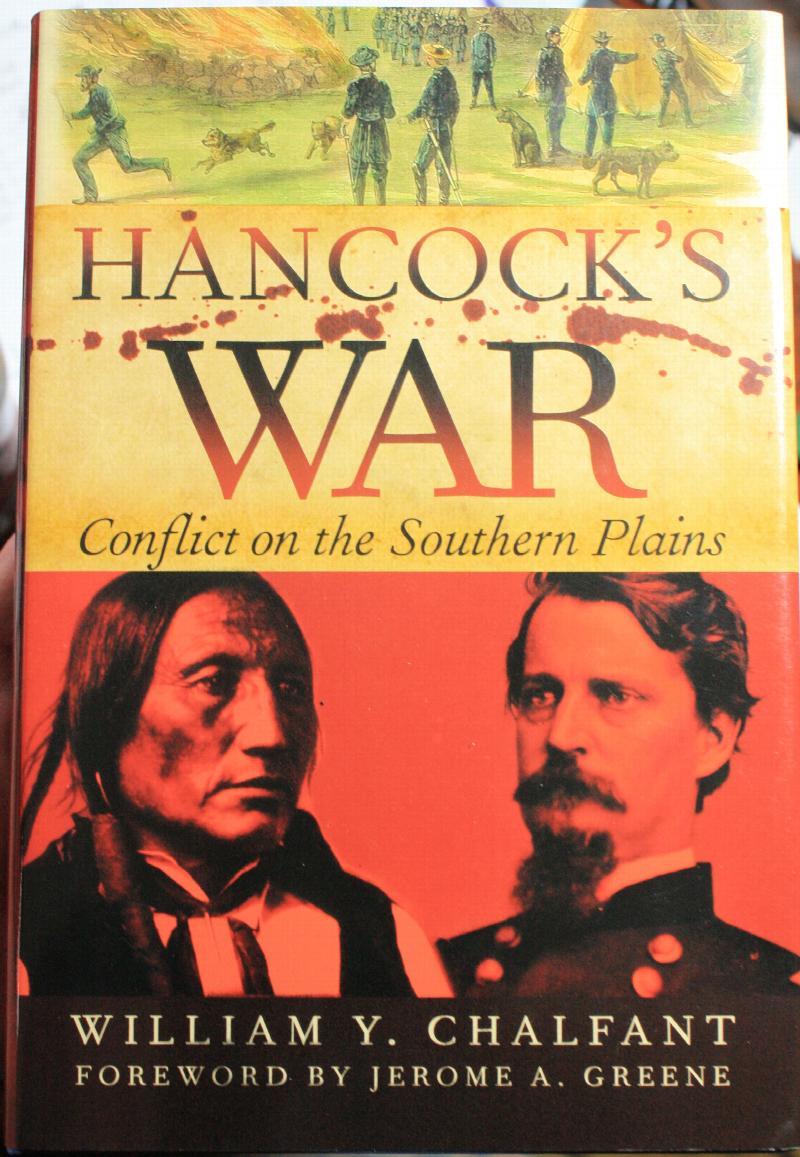
Echoes of the Plains: Hancock’s War and the Forging of an American Legend
The American West, a landscape etched in the national psyche, is a tapestry woven from countless threads of ambition, conflict, and the enduring human spirit. It is a land where history bleeds into legend, where the stark realities of frontier life become the epic tales passed down through generations. Among these narratives, often overshadowed by more famous conflicts, lies "Hancock’s War" – a pivotal, if tragically mismanaged, chapter from 1867-1868 that inadvertently fueled decades of brutal conflict and solidified the myths that would define the American frontier.
This was not a war of grand battles and decisive victories, but a series of skirmishes, misunderstandings, and retaliatory strikes that spiraled out of a single, ill-conceived military expedition. It was a conflict born from the collision of two vastly different worlds: the burgeoning, expansionist United States, flush with post-Civil War confidence, and the sovereign, nomadic nations of the Great Plains, fiercely defending their ancestral lands and way of life.
The General and the Grand Expedition

At the heart of this unfolding drama was Major General Winfield Scott Hancock, a celebrated Union hero whose stern demeanor and methodical approach had earned him the nickname "Hancock the Superb" during the Civil War. By 1867, the plains west of the Missouri River were a powder keg. White settlers, emboldened by the Homestead Act and the promise of the transcontinental railroad, pushed relentlessly westward, encroaching on lands guaranteed to Native American tribes by treaty. The Cheyenne, Arapaho, Sioux, Kiowa, and most formidably, the Comanche, watched their hunting grounds shrink and their buffalo herds dwindle. Sporadic raids on wagon trains and isolated settlements were met with equally brutal reprisals from the U.S. Army and newly formed state militias like the Texas Rangers.
Hancock, charged with keeping the peace, believed a decisive show of force was the only way to avert a larger war. He envisioned a grand expedition, a military parade designed to intimidate the tribes into submission and demonstrate the overwhelming power of the United States. In March 1867, he assembled a formidable force of nearly 1,400 men, including elements of the 7th Cavalry under the flamboyant Lt. Colonel George Armstrong Custer, and the 37th Infantry. Their mission, as Hancock saw it, was to escort a Peace Commission, impress upon the Native Americans the futility of resistance, and if necessary, "chastise" any hostile elements.
The expedition, a glittering spectacle of blue-clad soldiers, artillery, and supply wagons stretching for miles, marched across the Kansas plains. It was a sight designed to awe, but to the wary eyes of the Plains tribes, it was an unmistakable act of aggression.
A Spark Ignites the Plains: The Burning Village
The turning point, the incident that would forever brand Hancock’s expedition as a catalyst for war rather than peace, occurred in April 1867 near the Pawnee Fork of the Arkansas River. Hancock’s command encountered a large encampment of Cheyenne and Sioux, comprising several thousand people. The chiefs, wary of the large military presence, agreed to a parley. However, sensing the underlying tension and fearing for the safety of their families, many of the warriors began to move their women and children away from the village under the cover of darkness.
Hancock, interpreting this movement as a hostile act and a sign of bad faith, ordered Custer’s cavalry to surround the village. When morning light revealed the camp largely deserted, save for a few elderly and infirm individuals, Hancock’s patience snapped. Convinced he had been deceived, and despite the pleas of some of his officers who recognized the potential for disaster, he gave a fateful order: burn the village.
"We must strike a blow," Hancock reportedly declared, "that will be felt and remembered." The subsequent destruction of approximately 250 lodges, containing the winter provisions and personal belongings of hundreds of people, was a profound act of aggression. It was a declaration of war, not just against a few "hostiles," but against entire communities.
The immediate aftermath was swift and brutal. The displaced Cheyenne and Sioux, now without homes, food, or shelter, scattered across the plains, their anger and desperation boiling over. Raids, which had been sporadic, intensified dramatically. The Smoky Hill Trail, a vital artery for westward migration, became a death trap. Stage stations were burned, supply trains attacked, and settlers murdered. What Hancock had intended as a show of force to prevent war had, through a tragic misunderstanding and a rash decision, irrevocably ignited it.

The Comanche Enter the Fray: A Wider Conflict
While the initial fallout of the village burning primarily involved the Cheyenne and Sioux, the escalating violence soon drew in other powerful Plains tribes, most notably the Comanche. The Comanche, masters of horsemanship and fierce warriors, had long dominated the southern plains, their raids extending deep into Texas and Mexico. They viewed the relentless encroachment on their lands with a mix of disdain and growing fury.
Hancock’s expedition, though not directly targeting the Comanche, created a ripple effect. The general atmosphere of distrust and open warfare meant that any white presence on the plains was seen as a threat. Comanche chiefs like Satanta (White Bear) of the Kiowa and Kicking Bird, though sometimes advocating for peace, found their people increasingly drawn into the conflict by the actions of the U.S. Army and the desperation of their Cheyenne and Arapaho allies.
Texas, still recovering from the Civil War and its own internal strife, bore the brunt of much of this renewed warfare. The state’s frontier, stretching for hundreds of miles, was sparsely populated and poorly defended. The newly reformed Texas Rangers, under various captains like S.P. Newcomb and L.H. McNelly, found themselves constantly battling well-mounted and highly skilled Comanche warriors. These Rangers, often portrayed as paragons of frontier justice, engaged in a brutal and unforgiving war of attrition, their tactics often mirroring the ferocity of their adversaries.
One interesting fact is that many of the soldiers and officers involved in Hancock’s War, including Custer, were relatively new to fighting Native Americans. Their Civil War experience, while invaluable in conventional warfare, often proved ill-suited to the fluid, hit-and-run tactics of the Plains tribes. This learning curve, often paid for in blood, contributed to the prolonged nature of the conflict.
The Mirage of Peace: Medicine Lodge Treaty
Amidst the escalating violence, another attempt at peace was made. In October 1867, a Grand Council was convened at Medicine Lodge Creek in southern Kansas. Here, thousands of Native Americans from various tribes, including the Comanche, Kiowa, Cheyenne, and Arapaho, met with U.S. peace commissioners.
It was a monumental gathering, filled with speeches, pipe smoking, and promises. The U.S. government, represented by figures like Commissioner Nathaniel G. Taylor and General William T. Sherman, offered new reservations in Indian Territory (present-day Oklahoma) and annuities of goods in exchange for the tribes relinquishing vast tracts of land.
The speeches delivered by Native American chiefs at Medicine Lodge are legendary for their eloquence and their poignant plea for their way of life. Ten Bears, a prominent Comanche chief, delivered a powerful address, stating: "I was born on the prairie where the wind blew free and there was nothing to break the light of the sun. I was born where there were no enclosures and everything drew a free breath… I love to roam over the wide prairie, and when my pleasures cease to follow the buffalo, then I will not care to live." His words captured the essence of the Comanche spirit and their deep connection to the land.
The Medicine Lodge Treaty was signed, seemingly bringing an end to the hostilities. Many chiefs, recognizing the overwhelming power of the U.S. and hoping to secure a future for their people, agreed to the terms, albeit reluctantly. However, the peace was a fragile illusion. Many warriors, particularly among the younger generations, refused to abide by agreements they saw as capitulation. The government, for its part, was slow to deliver on its promises of annuities and supplies, leaving the tribes destitute and fueling further resentment.
The ink was barely dry on the treaty before raids resumed. The winter of 1867-1868 saw continued violence, confirming that Hancock’s War, far from being concluded, had merely transitioned into a new, more entrenched phase of conflict.
The Legacy of a Miscalculation: Forging Legends
Hancock’s War, though lacking a single, defining battle, was profoundly significant. It demonstrated the U.S. Army’s capacity for destruction and its willingness to use overwhelming force. It also highlighted the deep cultural misunderstandings and the often-disastrous consequences of military solutions to complex political and social problems.
For the Native American tribes, it was a brutal awakening to the relentless nature of American expansion. It hardened their resolve to fight for their lands and their way of life, even as it underscored the insurmountable odds they faced. The burning of the Cheyenne village became a potent symbol of betrayal and a rallying cry for resistance, a legend of injustice whispered around countless campfires.
For the white settlers and the military, the war cemented the image of the "hostile savage" who refused to be civilized. It justified further military campaigns and the continued push for "Manifest Destiny." The stories of daring raids and desperate defenses, of brave soldiers and resilient settlers, became the fodder for dime novels and campfire tales, shaping the romanticized and often distorted legend of the Wild West.
The war also played a crucial role in the development of the U.S. Army’s approach to the "Indian Wars." It highlighted the need for more adaptable tactics and a deeper understanding of Native American cultures. It led to a more aggressive strategy of winter campaigns, designed to hit tribes when they were most vulnerable, a strategy that would be famously employed by Sheridan and Custer in the years to come.
Ultimately, Hancock’s War serves as a powerful, if somber, legend of America. It is a legend not of clear heroes and villains, but of tragic miscalculation, cultural collision, and the forging of a nation through conflict. The echoes of that fateful spring on the Kansas plains, the crackle of burning lodges, and the thunder of horses’ hooves, continued to reverberate for decades, shaping the destiny of the West and leaving an indelible mark on the American story. It reminds us that legends, while often thrilling, are frequently born from the painful crucible of human experience, and that the "peace" achieved through force often carries a steeper price than the war it sought to avert.


